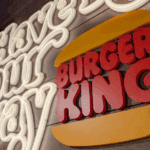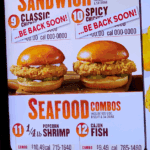Fast-food trips can feel like a free pass to indulge, especially when cravings for crispy chicken strike. But for those of us watching our heart health, especially blood pressure, it’s smart to recognize just how sodium-packed and calorie-dense these meals can be.
Popeyes is famous for its flavorful fried chicken and indulgent sides, but what’s behind the taste is often thousands of milligrams of sodium. The average American consumes around 3,400 mg of sodium daily, far above the recommended limit of 2,300 mg (or 1,500 mg if you’re managing high blood pressure).1
Excess sodium forces your body to retain water, raising blood pressure and putting strain on your arteries, potentially leading to stroke, heart attack, or kidney damage.2 But here’s the exciting part: you can still enjoy Popeyes, smartly, and with flavor intact.
The Truth About Salt
Ever wondered what’s really in that white granule you sprinkle on your fries? Salt is more than just a flavor enhancer – it’s a fascinating compound made up of 40% sodium and 60% chloride that plays a crucial role in keeping us alive.3
Beyond making food taste better, salt serves as a natural binder and stabilizer in cooking, and acts as a powerful preservative by creating an environment where harmful bacteria simply can’t survive. It’s been keeping our food safe for thousands of years.3
Your body is basically a sophisticated electrical system, and sodium is essential for keeping the lights on. Every day, sodium helps send signals through your nervous system, contract and relax your muscles (including your heart), and maintain the perfect balance of fluids and minerals.3
Here’s where things get tricky. While your body needs sodium to function, most of us consume way more than necessary. Excessive sodium intake can lead to high blood pressure, heart disease, and increased stroke risk as your cardiovascular (heart) system struggles under the extra strain.3
The good news? You don’t have to swear off your favorite fast-food spots to keep your sodium in check. Even at sodium-heavy chains like Popeyes, a few smart menu swaps can help you enjoy that crispy chicken fix without sending your blood pressure soaring.
Smart Swaps at Popeyes (That Still Taste Amazing)
Let’s be real: fried chicken and buttery biscuits are delicious, but they’re also packed with sodium, saturated fats, and refined carbs that don’t do your heart any favors. That said, you don’t have to swear off Popeyes altogether to make smarter choices. It just takes a little strategy.
Step 1: Start With the Blackened Chicken
Unlike the traditional fried chicken, Popeyes’ blackened chicken is grilled, not breaded, which means fewer calories and significantly less sodium. A three-piece order of blackened tenders clocks in around 550 mg of sodium, compared to more than 1,000 mg for their classic fried version. The seasoning still brings bold Cajun flavor, just without the deep-fried damage.4
Step 2: Rethink Your Sides
Instead of reaching for fries or mashed potatoes (which can pack 800+ mg of sodium per serving), opt for veggie-based options like corn on the cob or green beans. Corn on the cob typically contains less than 100 mg of sodium and adds a boost of fiber, while green beans come in under 700 mg and still offer more nutrients than fried alternatives. These small swaps help reduce your salt load while giving your body something it can use.4
If your restaurant does not offer these veggie-based options, opt for a coleslaw or cajun gravy instead.
Step 3: Watch The Sauces
Dipping sauces may seem harmless, but many are loaded with sodium and sugar. Ranch, honey mustard, and the BoldBQ sauce can each add 200–400 mg of sodium per serving. A simple fix? Stick with hot sauce. It’s bold, flavorful, and low in calories and sodium. Just be mindful of how much you use if you’re sensitive to spice.4
Step 4: Make Adjustments to Your Sweet Tea
Sugary beverages not only spike your blood sugar but often sneak in extra sodium too. Instead, go with water or unsweetened iced tea. If you’re looking for something a bit more exciting, ask the cashier if the restaurant carries flavorings that you can add to your unsweetened iced tea – they clock in at about 40 calories, which is lower than opting for a soda. These adjustments help with hydration and won’t interfere with your efforts to keep your heart, and your blood pressure, in check.4
These smart swaps aren’t about perfection. They’re about doing a little better, one order at a time. And when it comes to high blood pressure, even small improvements can make a big impact over time.
Takeaway Tips for Smart Eating on the Go
Fast food doesn’t have to mean fast-tracking health problems, especially when you’re armed with knowledge. When dining at places like Popeyes, start by checking the nutrition info online or in-store. Knowing the sodium and calorie content ahead of time makes it easier to avoid surprises and make intentional choices.
And perhaps most importantly, don’t go at it alone. Share these tips with friends and family, especially if you or your loved ones are managing high blood pressure or heart health concerns. Our health is often shaped by our habits, and the habits of the people we eat with.
Lastly, remember that these swaps are meant to support, not replace, medical care. If you’re navigating high blood pressure, talk to your healthcare provider about what dietary approaches are right for you. You deserve meals that nourish you and satisfy you, without putting you or your heart at risk.
References
- AHA. (2025, July 15). How Much Sodium Should I Eat Per Day? Retrieved from American Heart Association: https://www.heart.org/en/healthy-living/healthy-eating/eat-smart/sodium/how-much-sodium-should-i-eat-per-day
- Grillo, A., Salvi, L., Coruzzi, P., Salvi, P., & Parati, G. (20198). Sodium Intake and Hypertension. Nutrients. doi:10.3390/nu11091970
- Harvard . (2023, Marcg). Salt and Sodium. Retrieved from Harvard T.H. Chan School of Public Health: https://nutritionsource.hsph.harvard.edu/salt-and-sodium/
- Popeyes. (2025). Popeyes Nutrition. Retrieved from Popeyes: https://popeyesmenuusa.com/popeyes-nutrition/








